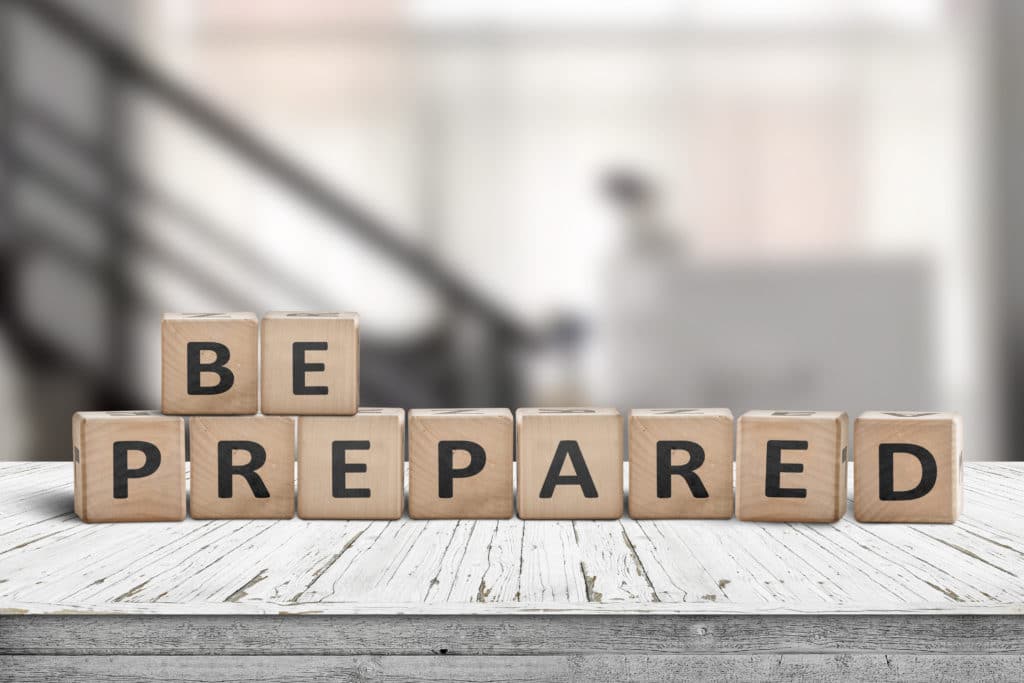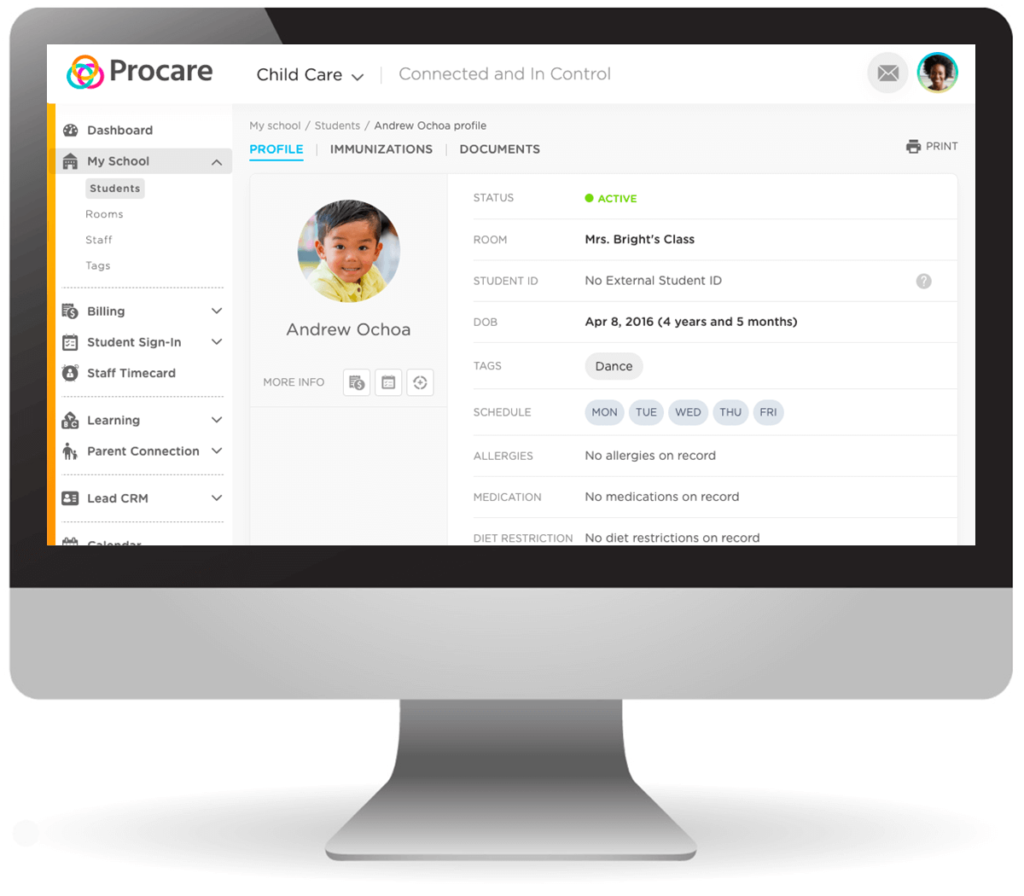
Most days at your child care center are business as usual, but you know you must always be prepared to respond to an emergency. A detailed and thoroughly rehearsed plan will serve you well when the unexpected happens.
Read on to learn more about the value of planning ahead for emergencies and what should go in your emergency plan. We’ll share the five best practices from child care experts for how to make the most of your emergency planning.
We’ve also included a link to Procare’s own emergency contact form template, designed by our experts to cover one of the most important aspects of emergency planning – contacting the right people. You can download it, print it out and modify it to best fit the needs of your center.
Why You Need a Daycare Emergency Plan
In many regions, child care centers are required to keep an emergency preparedness plan. That’s for good reason: having a detailed plan is the best thing you can do to keep your charges safe during an unexpected event or emergency.
Preparing ahead of time gives you valuable insight into how best to handle the details of emergency response at your center. As you lay out your emergency plan and prepare your staff to respond to emergencies, you may discover ambiguities, unnoticed hazards or gaps in resources that should be corrected before an emergency actually occurs.
Having a plan and thoroughly preparing in advance for emergencies lets you respond swiftly and in an orderly way, avoiding chaos and confusion. A good plan lets educators act confidently, keeps kids safe and reassured, and helps make sure parents are well-informed on what’s happening with their children.
The bottom line is that emergency preparedness saves lives.
FREE TEMPLATE
Child Care Emergency Contact Form
This child care emergency contact form template includes parent/caregiver information, other authorized emergency contacts and child medical information.
What Belongs in a Daycare Emergency Plan?
Basic Center Information: This includes the facility’s name, address, phone number, main point of contact and number of kids in care. Having this information in print during an emergency streamlines communication with first responders. Include details about the building that may be relevant in an emergency, such as the locations of fire extinguishers and shut-offs for gas, electric and water.
Emergency Contact List: Some emergencies may not warrant a 911 call, or other calls may need to be made. List local emergency numbers, the phone number of the nearest hospital, numbers for utility companies and insurance as well as any other individuals or organizations who may need to be contacted.
Emergency Kits and Supplies Information: In your emergency plan, document the location and contents of your emergency kits and supplies. Emergency kits should include everything you’ll need for administering first aid, evacuations and/or sheltering in place. If applicable, include the location of your kids’ emergency forms with their medical information and contact info. (Digitizing these forms can help save time retrieving that information in an emergency — more on that later.)
Evacuation Strategy: When evacuation is needed, consider how children will be removed from the center. Will everyone gather in a central meeting place? How will you move kids too young to walk distances? In the event of evacuation through a window, how will safety be ensured? These and more should be the questions answered by your evacuation strategy.
Evacuation Routes/Exits: Carefully document all exits to your center, including which ones should be primarily used for evacuation and which ones can be used as last-resort alternatives.
Evacuation Sites/Meeting Points: After staff and kids have been evacuated from your center, they’ll need somewhere to go. Depending on the breadth of the evacuation, different evacuation sites may be required. Arrange evacuation sites for various contingencies: in the neighborhood for a center-based emergency, outside of the neighborhood if there is a local hazard and out-of-town if evacuation is widespread. Make plans with each evacuation site ahead of time and regularly update these contacts to ensure there will always be someone there who is aware of the arrangement and can help.
Notification Plan: Once everyone’s safety is assured, it’s time to call first responders (if not already alerted) and notify parents of the emergency. In your emergency plan, write down at which step of the plan parents should be notified (such as after emergency services have been called and a final headcount has been performed). Give a basic outline of what information should be provided to parents — the nature of the emergency, address of evacuation site and contact details.
Shelter in Place Strategy: In case you need to shelter in place, such as due to adverse weather or a threat from a person, have a plan in place for where children will be taken and how order will be maintained. Document your shelter and what supplies are stocked there. Regularly check the supply list for anything that needs to be restocked or replaced.
Parent Reunification Strategy: After the emergency has passed, your reunification strategy will help you get kids back to their parents in the safest way possible. With the notification plan, the reunification strategy should outline the information and contact details shared with parents, what channels will be used to contact parents, where parent contact details are kept, backup contacts if parents cannot be reached and the procedure for authorized release of a child to a parent or emergency contact.
Five Best Practices for Daycare Emergency Planning

Plan for the Most Common/Riskiest Emergencies
Comprehensive emergency planning is a great thing, but when focus is needed, it’s best to think about the contingencies likely to occur in your area. All child care centers can potentially be at risk of fire, medical emergencies and utility failure. But other risks, such as specific weather events, are more region-dependent.
It’s also worth considering which emergencies pose the greatest risk. For instance, a power failure is a common problem at child care centers, but may not cause an immediate threat to safety. The most detailed planning is needed for emergencies that can pose the greatest risk, such as a fire.
Assign Individual Roles and Responsibilities
When fast action is needed, pre-assigned responsibilities ensure everyone can jump into their role immediately and that all necessary tasks are completed. This allows for the most efficient and reliable emergency response.
While assigning roles and responsibilities, ensure that everyone knows what their own role is, as well as others’ roles. Redundancy is helpful: key roles should have more than one person assigned, so that if one person is absent or incapacitated, the other can step in.
Hold and Document Emergency Drills
A good emergency plan doesn’t just exist on paper. Regular emergency drills give your staff and kids practice with responding to emergencies so they can habituate the steps they’ll need to follow and learn to remain calm.
Assign a staff member to observe and take notes on the drill, so that any difficulties in the drill can be addressed later. And ensure all your emergency drills are logged in one place.
Digitize Child and Family Information
Whether you need to know a child’s medication allergies or how to get in touch with a backup emergency contact, having the data you need in an emergency is vital for a fast, accurate response. Digitizing these records allows your staff to have access on any device, anywhere, without having to stop to gather information packets.
Updating digital records is instant and eliminates redundancy, saving your staff valuable time and making it effortless to keep this important information as up-to-date as possible.
Communicate Promptly with Parents
Once the safety of your children and staff has been secured and emergency responders have been contacted, your next step in an emergency should be to notify parents of the situation. Whether or not a parent’s child is directly affected, parents need to know when accidents or emergencies happen at your center.
Consider using multiple channels to share information with parents. While not all parents can take a phone call immediately, some may be able to view text messages at work. And when anxious parents are jamming the phone lines at your center, a voice mail message with information or a well-updated social media page can help provide reassurance.
Support Your Daycare Emergency Plans with Procare Solutions

As an educator, child safety is your number-one priority. And with more than 30 years of experience supporting child care centers across the country, Procare knows what you’ll need to protect every child in an emergency.
With Procare’s easy-to-use child care management software, you can track student attendance and access detailed child records, including medical information and emergency contacts, from any device.
Our child care security equipment with keyless entry gives you the ability to secure your building and monitor drop-offs and pickups to ensure parents’ peace of mind.
Plus, Procare’s leading parent engagement platform gives you the ability to push reassuring and informative updates to parents by email or text.
To help you plan for emergencies, we’ve created a downloadable child care emergency contact template that you can use at your center.



